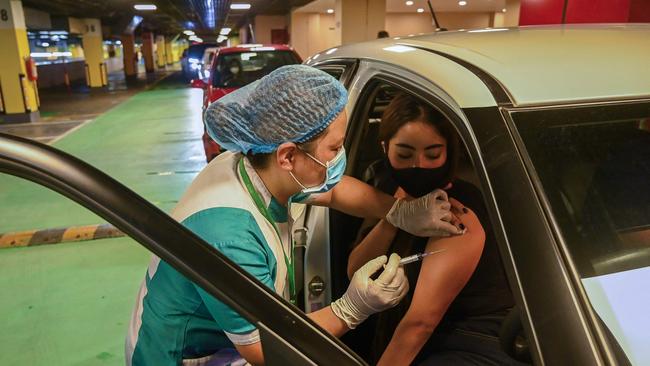Coronavirus: third vaccination on the horizon
From late September, Australians will be able to get a third brand of Covid-19 vaccine made by US company Moderna.

From late September, Australians will be able to get a third brand of Covid-19 vaccine made by US company Moderna. And from next year, Australians already fully vaccinated will be offered a booster dose of the same drug. This booster shot is still in development, but early trials show it provides better protection against the South African and Brazilian variants of the virus.
How does it work?
The Moderna jab is an mRNA vaccine similar to the Pfizer jab. It teaches our cells how to make a protein from the virus that causes Covid-19 and triggers an immune response inside our bodies.
Who can use it?
It has been approved for emergency use in the US for people aged over 18. Like the Pfizer vaccine, it will be a safer option than AstraZeneca for those aged under 50.
How many doses do you need?
Two doses of the original vaccine are required four weeks apart.
How many doses of the booster vaccine are needed?
Only one dose of the booster vaccine will be needed.
Can I get a Moderna booster vaccine if my first vaccine was Pfizer or AstraZeneca?
Yes. Health department chief Professor Brendan Murphy says it is a good idea to mix and match vaccines to enhance your immunity to the virus.
Which countries are using it?
The US began using the vaccine in December 2020, France began using it in January 2021, Singapore in March 2021 and the UK in April 2021.
How effective is it?
Initial clinical trials showed the vaccine was 94 per cent effective and later real world evidence shows it’s pretty good after even just a single dose.
Two weeks after just a single shot of the Moderna vaccine, the risk of Covid-19 infection was reduced
by 80 per cent, a study of vaccinated US health workers found. The risk of infection fell 90 per cent by two weeks after the second shot.
Who should not use Moderna?
People who have allergies that produce anaphylactic reactions need to be cautious about having the Modern vaccine. A very small number of people have experienced anaphylactic reactions to the vaccine and if this happens the US Food and Drug Administration advises they should not have the second dose.
What are the side effects?
Key side effects according to the FDA are: pain, tenderness at the injection site, swelling of the lymph nodes in the same arm of the injection, fatigue, headache, muscle pain, joint pain, chills, nausea and vomiting, and fever.
How does it have to be stored?
Unlike the AstraZeneca vaccine, the Moderna vaccine needs more careful storage at very cold levels but it has a better storage profile than the sensitive Pfizer jab.
Moderna’s vaccine is stable for six months at temperatures of minus 20 degrees Celsius (regular freezer temperature), once thawed unpunctured vials can be kept at normal fridge temperatures for up to a month.
New research shows it could be OK for up to
three months in a fridge. That is a key advantage over the Pfizer jab, which can only be stored in a fridge for five days.




To join the conversation, please log in. Don't have an account? Register
Join the conversation, you are commenting as Logout